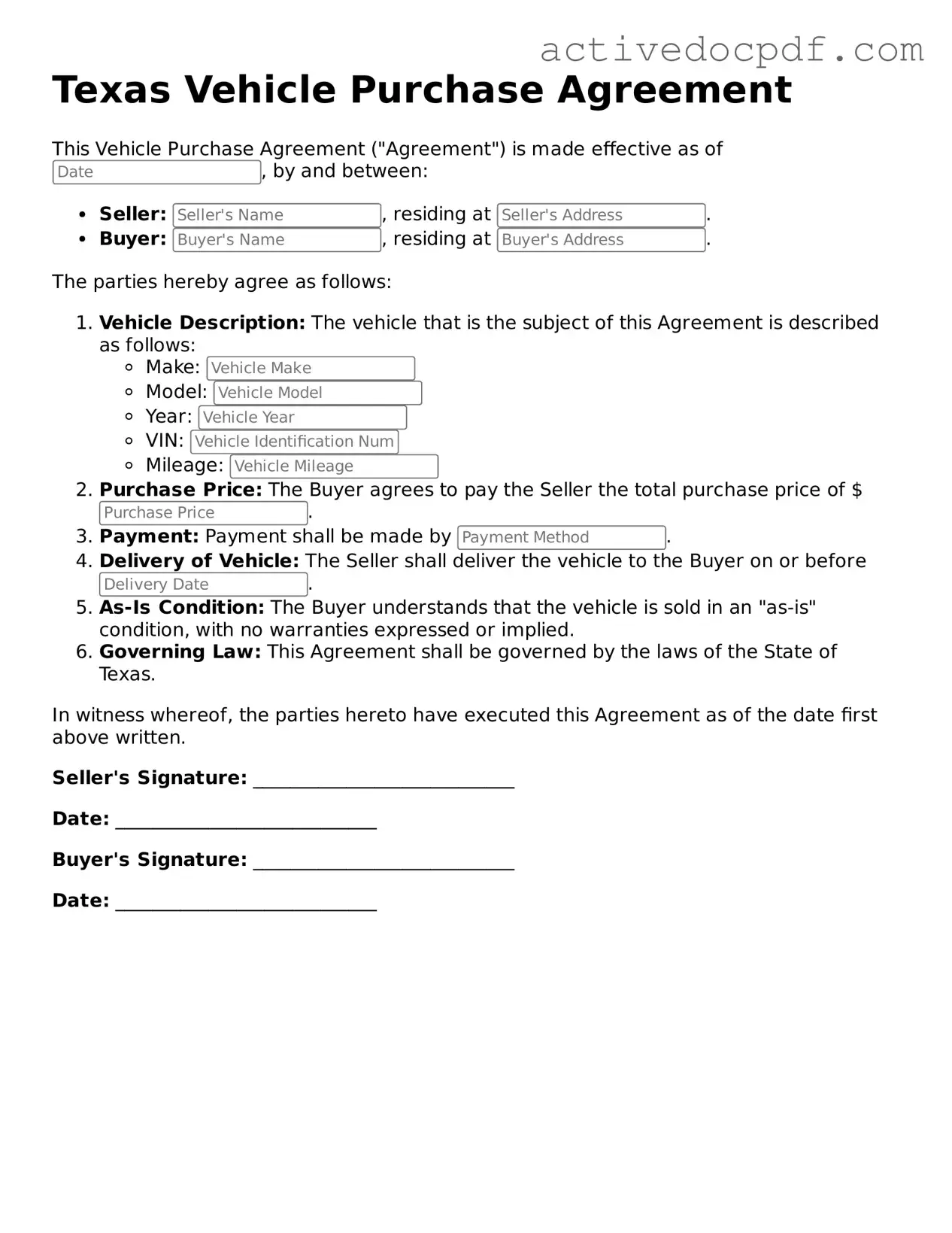The Texas Vehicle Purchase Agreement is a legal document that outlines the terms and conditions of a vehicle sale between a buyer and a seller. It serves as a record of the transaction and includes details such as the vehicle's make, model, year, VIN, sale price, and the responsibilities of both parties.
Anyone involved in the sale or purchase of a vehicle in Texas should use this form. This includes private sellers, dealerships, and buyers. Using the agreement helps protect both parties and ensures that all terms are clearly documented.
The form typically requires the following information:
-
Buyer’s name and contact information
-
Seller’s name and contact information
-
Vehicle details (make, model, year, VIN)
-
Sale price
-
Date of sale
-
Signatures of both parties
Is the Vehicle Purchase Agreement legally binding?
Yes, once both parties sign the agreement, it becomes a legally binding contract. This means that both the buyer and seller are obligated to adhere to the terms outlined in the document. If either party fails to comply, legal action may be pursued.
Do I need a notary public for this agreement?
A notary public is not required for the Texas Vehicle Purchase Agreement to be valid. However, having the agreement notarized can add an extra layer of authenticity and may be beneficial in case of disputes in the future.
What happens if there are issues with the vehicle after purchase?
Typically, the agreement will specify whether the sale is "as-is" or if any warranties apply. If the sale is "as-is," the buyer accepts the vehicle in its current condition, and the seller is not responsible for any issues that arise post-sale. If warranties are included, the seller may be held accountable for certain repairs.
Can the agreement be modified after signing?
Once signed, the terms of the agreement are generally considered final. However, if both parties agree to changes, they can create an amendment to the original document. This amendment should also be signed by both parties to ensure its validity.
What should I do if I lose the agreement?
If the original Vehicle Purchase Agreement is lost, it is advisable to create a new copy with the same details. Both parties should sign this new document to reaffirm the terms of the sale. Keeping a digital copy can also help prevent future loss.
You can find the Texas Vehicle Purchase Agreement form online through various legal document websites, or you can create your own using templates available for download. Make sure to verify that the form complies with Texas state laws.
There is no official fee for using the Texas Vehicle Purchase Agreement form itself. However, if you choose to have the document notarized or seek legal advice in drafting it, those services may incur costs.
